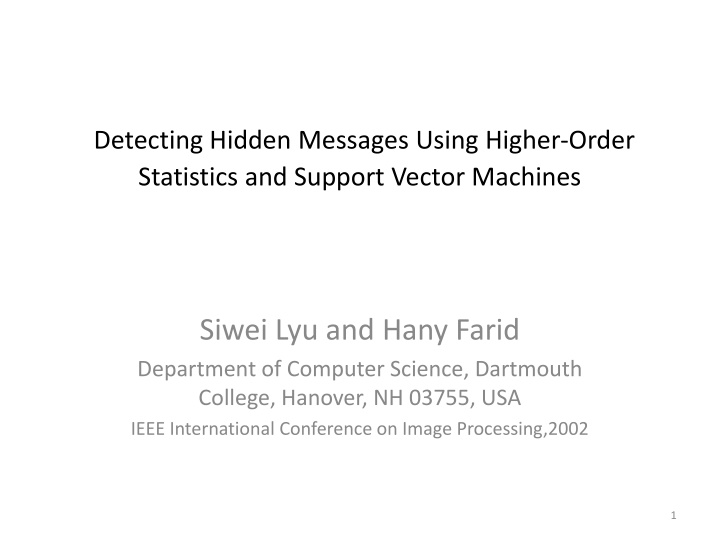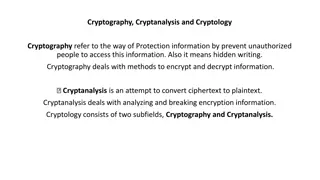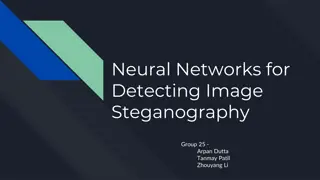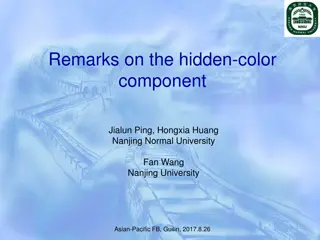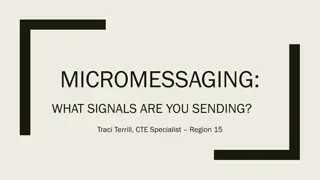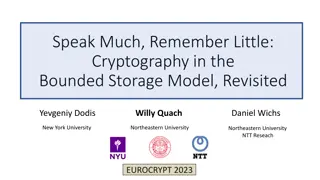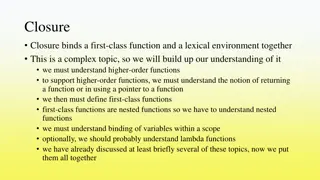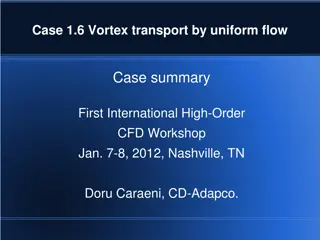Detecting Hidden Messages Using Higher-Order Statistics
Detecting embedded messages in images imperceptible to the human eye by analyzing statistical deviations using support vector machines. The study focuses on employing higher-order statistics and support vector machines to detect changes in image statistics caused by hidden messages.
Uploaded on Feb 18, 2025 | 1 Views
Download Presentation

Please find below an Image/Link to download the presentation.
The content on the website is provided AS IS for your information and personal use only. It may not be sold, licensed, or shared on other websites without obtaining consent from the author.If you encounter any issues during the download, it is possible that the publisher has removed the file from their server.
You are allowed to download the files provided on this website for personal or commercial use, subject to the condition that they are used lawfully. All files are the property of their respective owners.
The content on the website is provided AS IS for your information and personal use only. It may not be sold, licensed, or shared on other websites without obtaining consent from the author.
E N D
Presentation Transcript
Detecting Hidden Messages Using Higher-Order Statistics and Support Vector Machines Siwei Lyu and Hany Farid Department of Computer Science, Dartmouth College, Hanover, NH 03755, USA IEEE International Conference on Image Processing,2002 1
Outline Introduction Image Statistics Classification Results Conclusion References 2
Introduction Although the presence of embedded messages is often imperceptible to the human eye, it may nevertheless disturb the statistics of an image. The embedding of a message significantly alters these statistics and thus becomes detectable. Support vector machines (linear and non-linear) are employed to detect these statistical deviations. 3
Image Statistics The decomposition employed here is based on separable quadrature mirror filters (QMFs) 4
Image Statistics This is accomplished by applying separable lowpass and highpass filters along the image axes generating a vertical, horizontal, diagonal and lowpass subband. 5
Image Statistics The vertical, horizontal, and diagonal sub bands at scale i = 1, ..., n are denoted as Vi(x, y), Hi(x,y), and Di(x,y), respectively 6
Image Statistics The second set of statistics is based on the errors in an optimal linear predictor of coefficient magnitude 7
Image Statistics Where denotes scalar weighting values. This linear relationship is expressed more compactly in matrix form as The coefficients are determined by minimizing the quadratic error function: 8
Image Statistics This error function is minimized by differentiating with respect to W: Setting the result equal to zero, and solving for w to yield: 9
The log error in the linear predictor is then given by: It is from this error that additional statistics are collected, namely the mean, variance, skewness and kurtosis. 10
Classification Linear Separable SVM Linear Non-Separable SVM 11
Classification Non-Linear SVM 12
Results Use 640*480 pixel, message consists of a n*n pixel n= {32,64,128,256} ,pixel range [0,255]. 13
Conclusion These higher-order statistics appear to capture certain properties of natural" images, and more importantly ,these statistics are significantly altered when a message is embedded within an image. To avoid detection, of course, one need only embed a small enough message that does not significantly disturb the image statistics. 14
References H. Farid. Detecting hidden messages using higher-order statistical models. In International Conference on Image Processing, page (to appear), Rochester, New York, 2002. M. Vetterli. A theory of multirate filter banks. IEEE Tr ansactions on ASSP, 15
